Emerging diseases
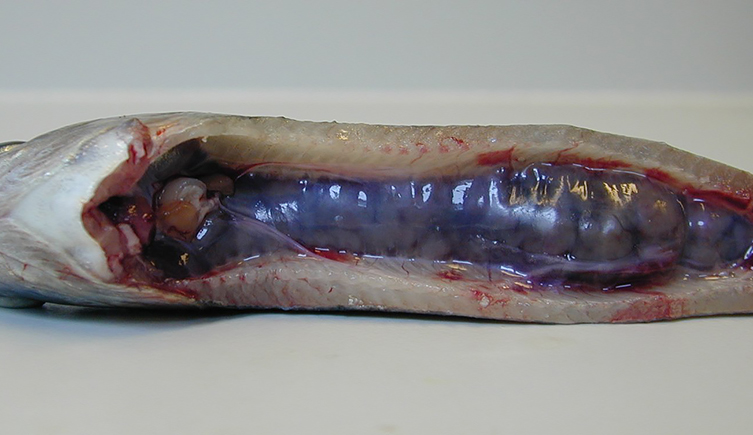
Swollen kidney of fish with Proliferative Kidney Disease (PKD), image by Matt Longshaw
Many diseases of wild and farmed animals are emerging due to climate change, habitat degradation and associated biotic responses.
The response of animals to these changes may alter parasite distributions and promote disease outbreaks in new regions.
Our research encompasses parasite diversity, parasite interactions with hosts, disease vectors and the environmental drivers of disease development and outbreak.
Diseases caused by myxozoans
Much of our work focuses on myxozoans - highly simplified microscopic endoparasites (living inside hosts) with complex life cycles involving vertebrate and invertebrate hosts.
Amazingly, myxozoans are related to jellyfish.
We focus on myxozoans exploiting farmed and wild fish to address the following topics:
- Strains of the myxozoan causing devastating disease in salmon and trout.
- Myxozoan co-infections.
- Myxozoan diversity and potential for disease emergence in fish.
- Strategies used to exploit invertebrate and vertebrate hosts.
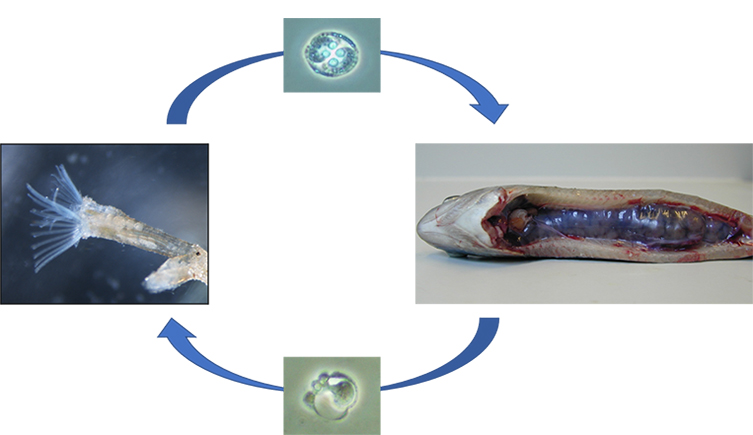
Life cycle of myxozoan parasite that causes devastating Proliferative Kidney Disease – includes infection (white sacs) inside freshwater bryozoan (on left), released spores that infect salmon or trout (swollen kidney on right), and released spores that in turn infect bryozoan, images by Beth Okamura, Matt Longshaw, Ron Hedrick
Museum staff
Collaborators
- Dr Hanna Hartikainen
University of Nottingham - Dr Paolo Ruggeri
Xelect Ltd, St Andrews - Dr Jason Holland
University of Aberdeen - Dr Alex Gruhl
Max Planck Institute for Marine Microbiology, Bremen - Prof Paul Long
King’s College London - Dr Liam Doonan
King’s College London - Dr Edson Adriano
Universidade Federal de São Paulo
- Dr Juliana Naldoni
Universidade Federal de São Paulo - Dr Tara Miller
Syngenta
Parasites and pathogens linked with waterfowl
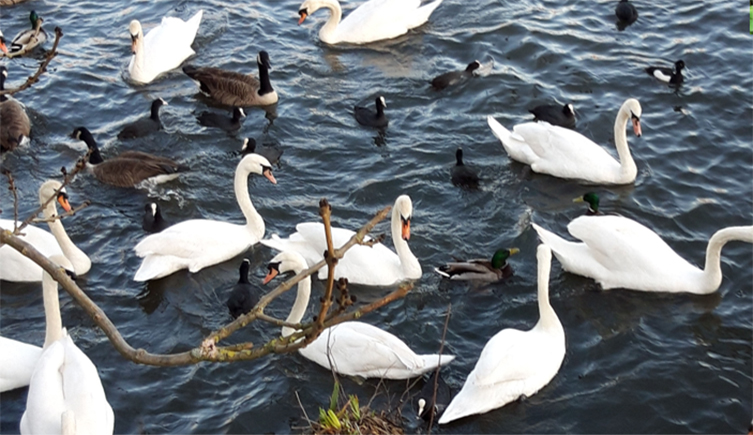
Migratory (tufted duck, mallard) and non-migratory (swans, coots, Canada geese) birds may transport parasites and pathogens to new sites via their faeces, image by Beth Okamura
Migratory birds have the capacity to spread disease over broad spatial scales. Changes in migratory behaviour may thus impact disease distributions.
We are using non-invasive molecular approaches to detect the DNA of parasites and pathogens associated with waterfowl by analysing bird poo.
Museum staff
- Prof Beth Okamura
- Dr David Bass
- Dr Andy Briscoe
Collaborators
- Prof Andy Green
Estación Biológica de Doñana - Dr Hanna Hartikainen
University of Nottingham
Parasites and pathogens of endangered amphibians
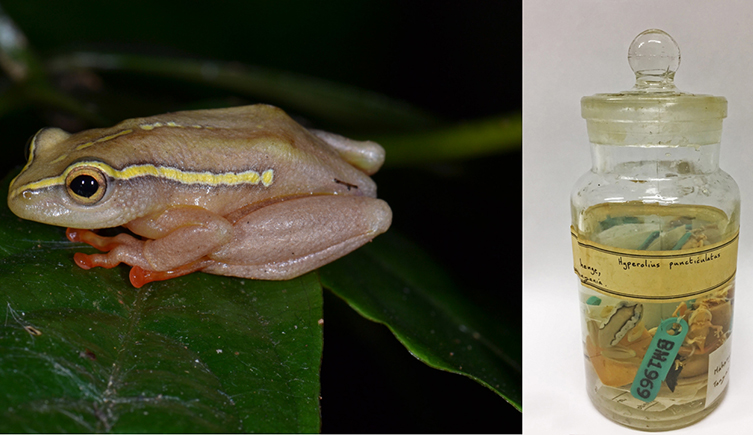
The frog Hyperolius substriatus from a tropical diversity hotspot. Individual (on left) from Mozambique and specimens (on right) from our collections, images by Gabriella Bittencourt-Silva
Amphibian populations are endangered globally with populations threatened by habitat loss, changing climate, pollution and invasive taxa.
Amphibian health may also be compromised by changing compositions of associated parasites and pathogens (their ‘pathobiomes’).
Investigating how pathobiomes have changed over time may reveal threats and discovery of novel affiliated taxa that could be prone to extinction as their host populations decline.
We are using next generation sequencing technologies to characterise pathobiome changes in present-day and historical material in museum collections from tropical hotspots of frog diversity.
Museum staff
- Prof Beth Okamura
- Dr Ashlie Hartigan
- Dr Gabriela Bittencourt-Silva
- Dr David Bass
- Dr Andy Briscoe
- Dr Jeff Streicher
- Dr Simon Loader
Collaborators
- Dr Richard Leggett
Earlham Institute
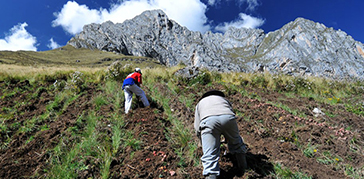
Sustainability
We are exploring new sources of food, predicting the spread of disease and finding scarce elements

Invertebrate research
Our scientists are investigating the taxonomy, systematics and biodiversity of groups of invertebrates
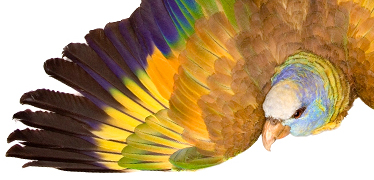
Zoology collections
Our zoology collection has 29 million animal specimens and is rich in voucher, type and historical specimens
